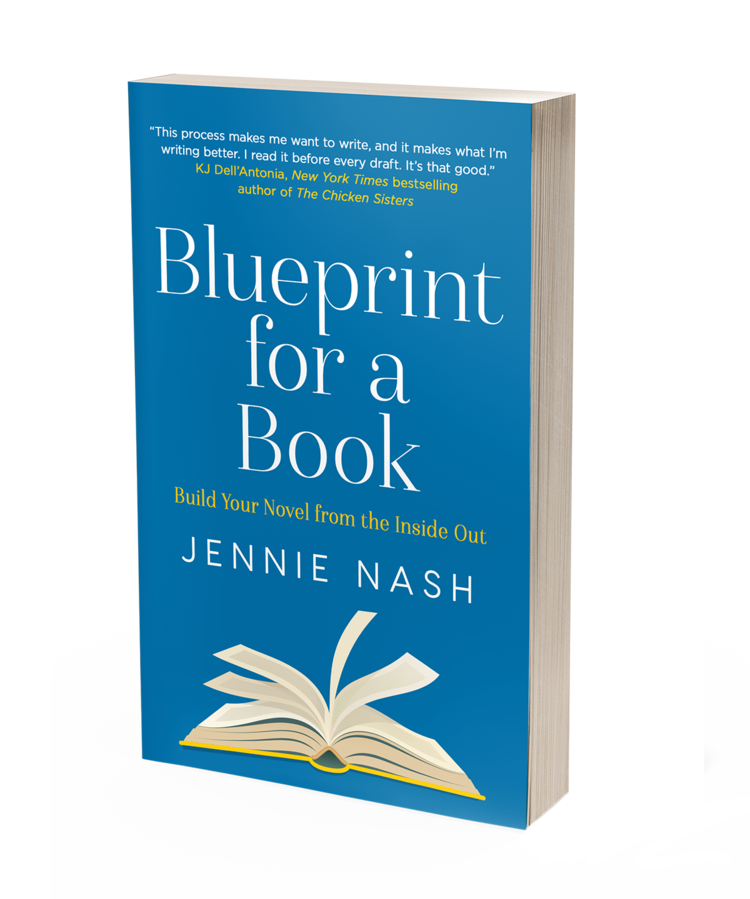Can you stand me talking about one more book? I hope so! Blueprint for a Book: Build Your Novel from the Inside Out by Jennie Nash didn’t make my list of 10 Essential Books on Writing, posted a month ago, because I had just discovered it and wasn’t sure how “essential” it would turn out to be. I took an evening webinar from Nash, sponsored by Free Expressions Seminars & Literary Services (check them out — fabulous classes!), and was surprised how impressed I was. I’d first heard about her “Inside Outline” a while back, and looked into taking her self-directed course on the topic, but decided I didn’t need another way to outline — at the time, I needed ways to brainstorm more ideas about what to put IN the outline! (More on that to come.)
I was right, and I was wrong. When I saw Nash’s course offered by a source I trust, I was in. The focus of the Inside Outline is identifying your main character’s internal motivations and using those to outline your book in chunks or events. The MC’s internal needs — what Nash calls “the point” — are shaped a bit by events, then lead directly to the next chunk of events, and so on. The result is not a play-by-play forecast of the book, but a roadmap. You’ll have a plan for getting from Tacoma to Tampa. You’ll decide on the way where to stop for lunch, but you’ll have the hotels booked and the sights you don’t want to miss identified, and you’ll significantly reduce your chances of ending up in Tucson or Toronto. Which is the point, for most of us who outline to any degree.
The book walks through all that in 14 steps, starting with asking why you want to write this book, figuring out “the point” of it, writing a simple version, then a working title, and so on, leading to a three-page Inside Outline, followed by tips on using it to write the book, revise, and write the dreaded synopsis.
I already had a partial outline when I started Nash’s book, and I have always tried to incorporate the MC’s internal motivations and stakes. But this book helped me clarify my thinking tremendously. Is it working as I write? So far, so good!
Admittedly, this book is for those who outline or who maybe don’t but want to try it, to get more clarity before they start. But even committed pantsers could benefit from the early steps or even, as Nash suggests, writing the short Inside Outline after the first draft, to help you understand what you’ve created and give the next draft more narrative drive. It’s a short book — under 150 pages — so give it a try!

